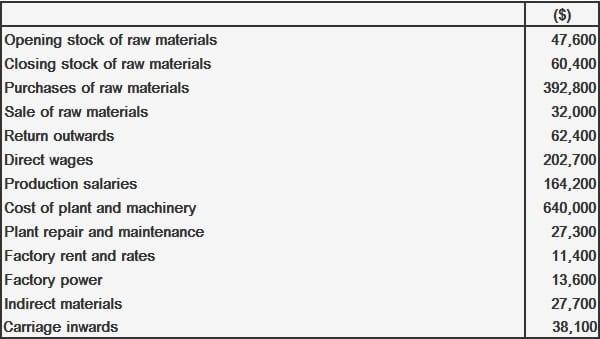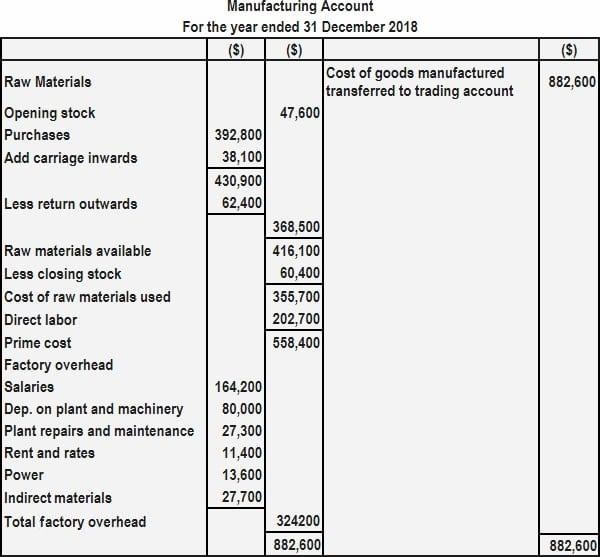Production cost is also known as factory cost and cost of goods manufactured. It is the sum of prime cost and production overheads. This figure is presented in a special ledger account called the manufacturing account. The figures disclosed in the trial balance of a manufacturing concern may relate to raw materials, direct labor, and factory overheads. These figures are transferred from their respective accounts to the manufacturing account in the same way as figures relating to the purchase and sale of goods are transferred to the trading account. The balance of the manufacturing account discloses the total cost of goods manufactured, which is then transferred to the trading account. Prepare a manufacturing account from the information below. This information was taken from the books of a manufacturing concern. In this example, depreciation on plant is to be provided at 12.5% of cost.Definition and Explanation
Example

Solution

Production Cost FAQs
Factory overhead is a part of production cost. The main component of production cost is prime cost, also known as direct material and direct labour. Factory overheads, considered secondary to prime costs, are all indirect expenses related to factory management including cost of machine Depreciation.
Factory overhead' is a term used in business management for expenses related specifically with the cost of maintaining the premises, plant and equipment within a factory. Factory overhead costs may include items such as electricity, heat, power, rent, Depreciation on machines or even the supervisor's salary. Costs not included with factory overhead are selling costs and general administrative expenses.
Prime cost is a component of production cost which includes direct materials, direct labor, and any other costs that can be easily traced to the product.
The formula for calculating prime cost is: Prime Cost = Direct Materials + Direct Labor + Other Costs Traceable to Product.
Production orders are used to sell the products of a company. A production order will contain information such as how many units will be produced, what materials and labor costs will be needed, and how much will be expected to cover fixed costs. The production order then becomes a work order.
True Tamplin is a published author, public speaker, CEO of UpDigital, and founder of Finance Strategists.
True is a Certified Educator in Personal Finance (CEPF®), author of The Handy Financial Ratios Guide, a member of the Society for Advancing Business Editing and Writing, contributes to his financial education site, Finance Strategists, and has spoken to various financial communities such as the CFA Institute, as well as university students like his Alma mater, Biola University, where he received a bachelor of science in business and data analytics.
To learn more about True, visit his personal website or view his author profiles on Amazon, Nasdaq and Forbes.











